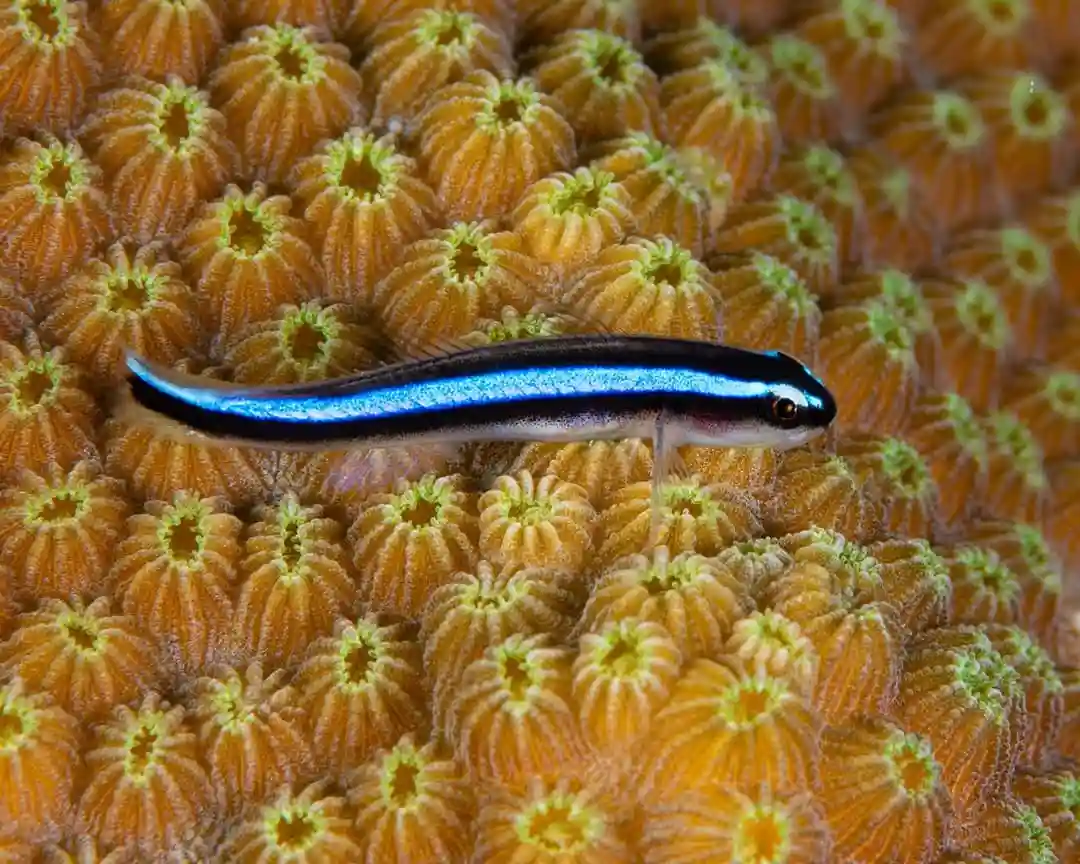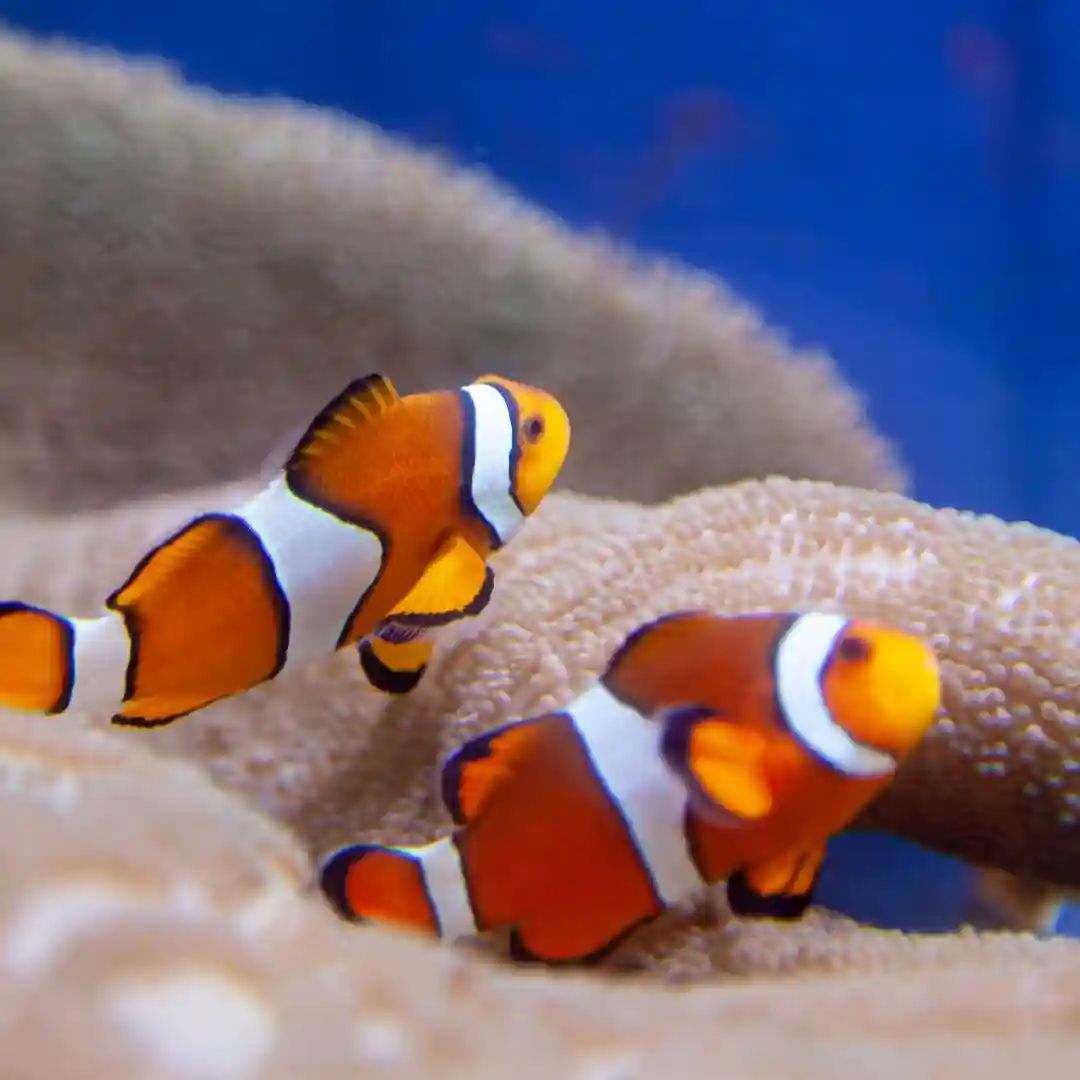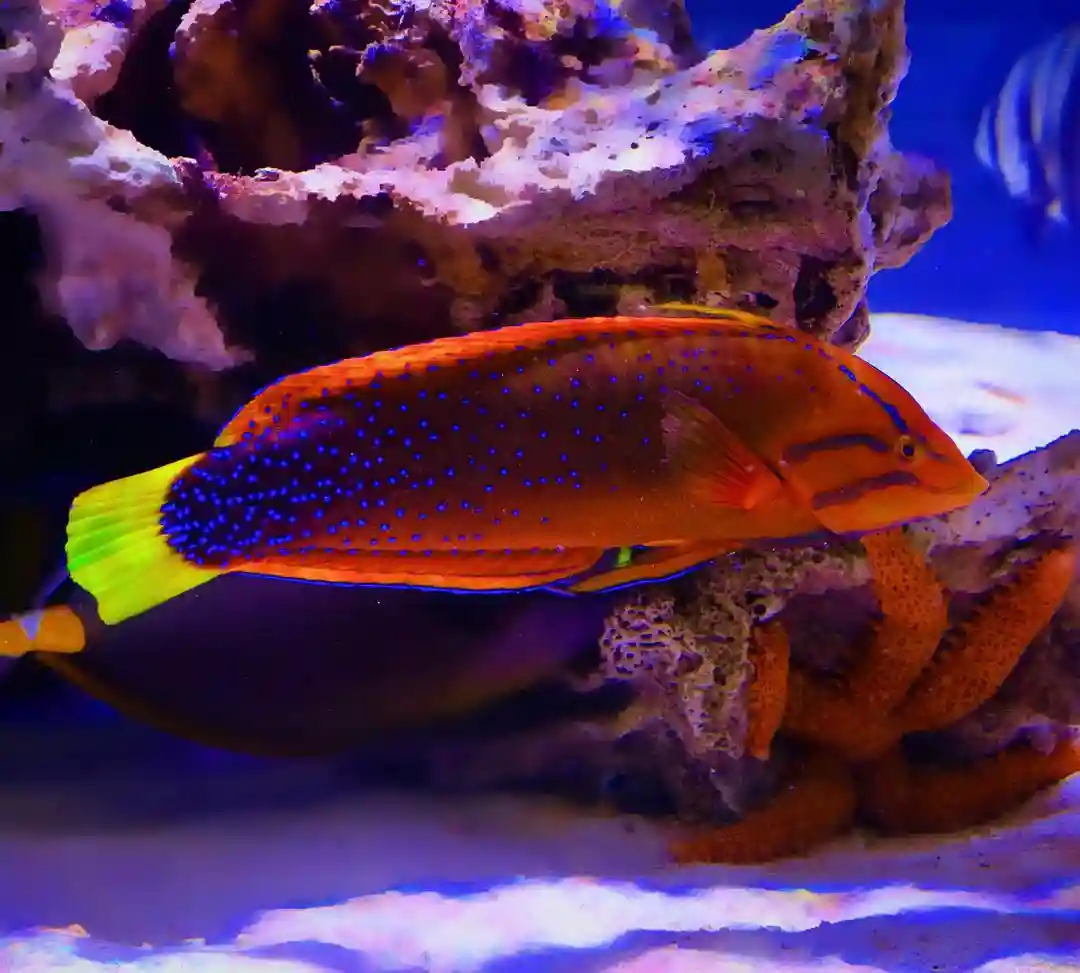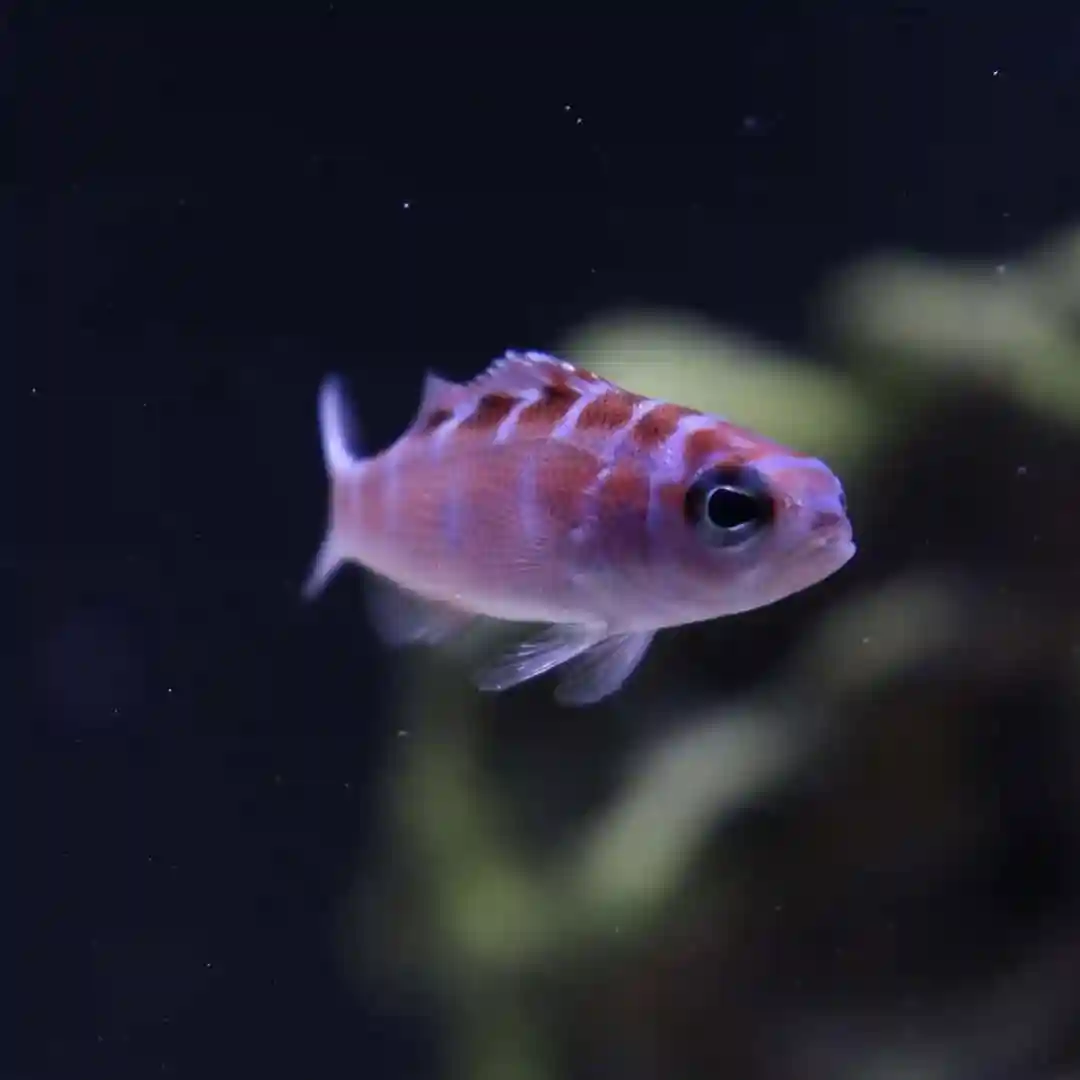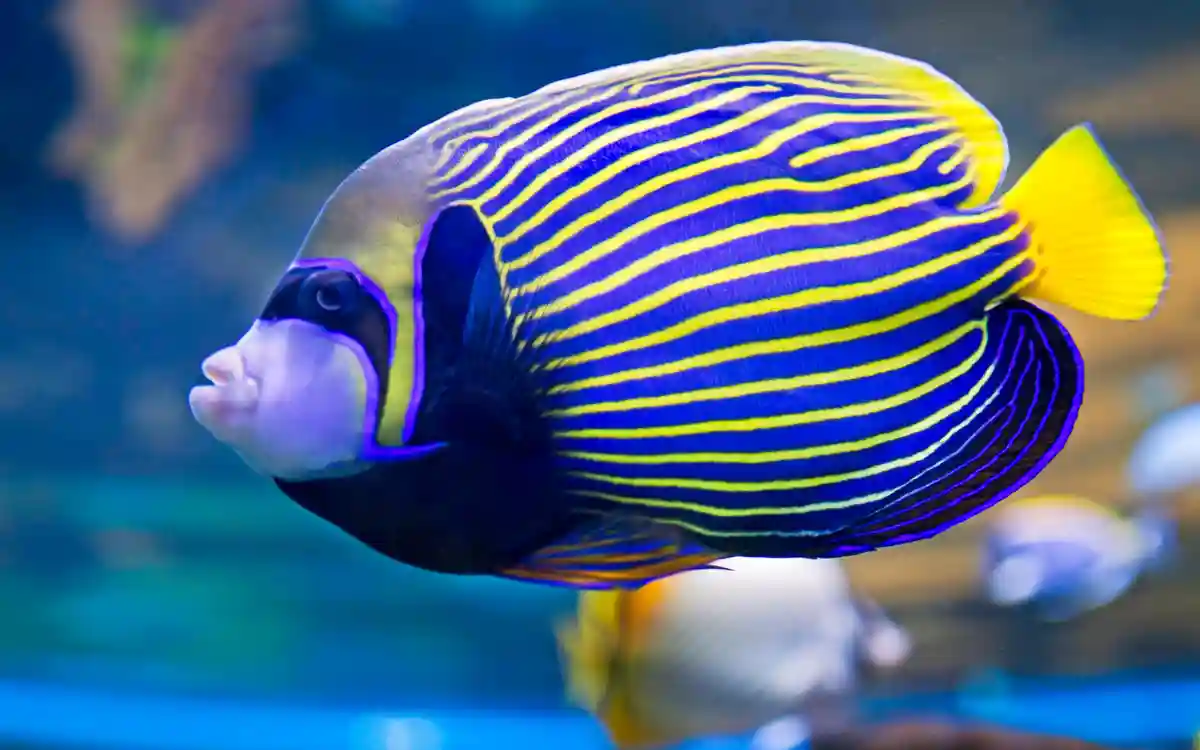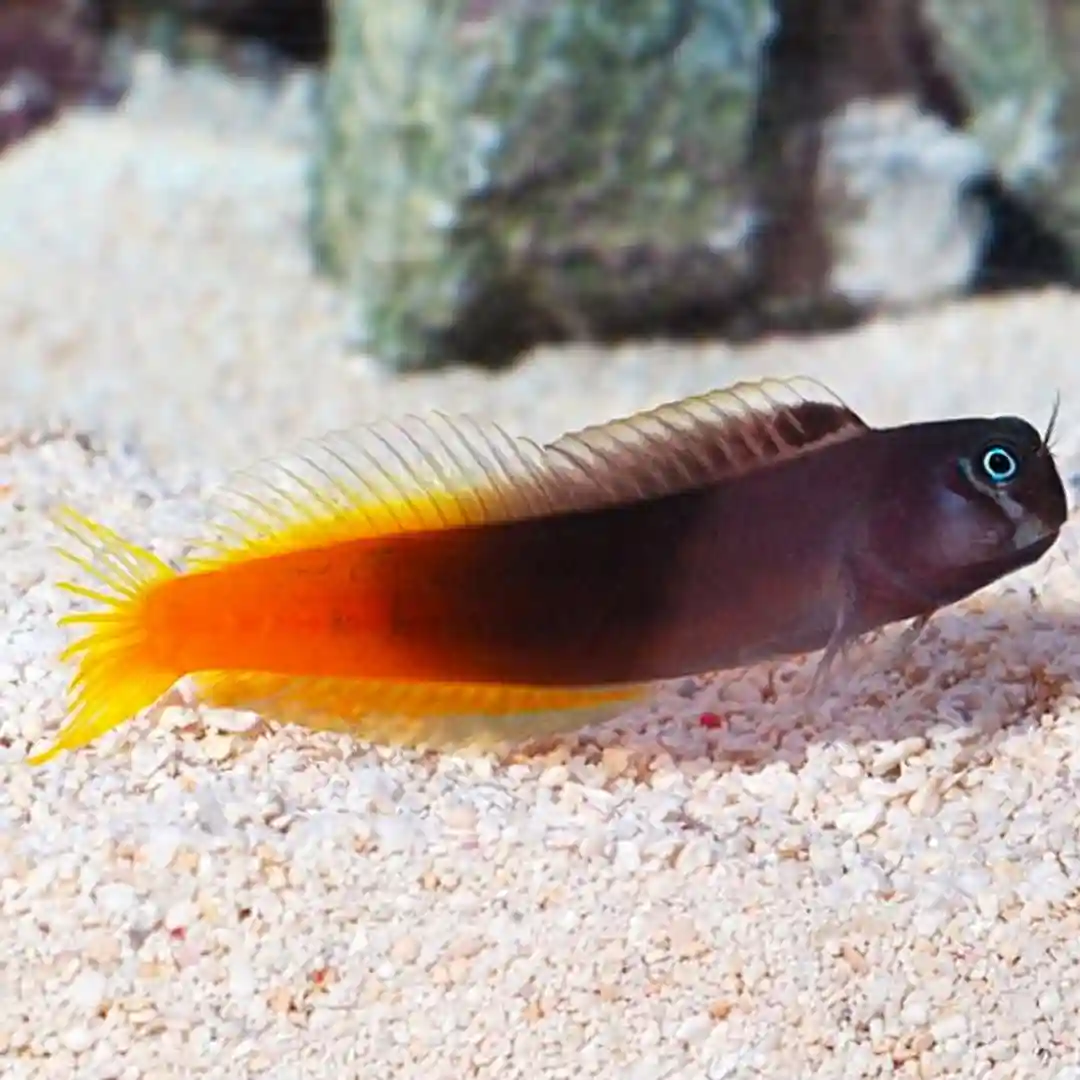Diamond Goby Care Guide
If your aquarium sand bed looks like it’s been through a mini sandstorm, you might already know what a Diamond Goby (Valenciennea puellaris) can do. These fish are the little janitors of the saltwater world cute, hardworking, and constantly shoveling sand through their mouths like it’s an Olympic sport.
I still remember the first time I brought one home. Within 24 hours, my tank went from “meh” to “freshly vacuumed ocean floor.” Of course, it also covered half my coral in sand… but hey, can’t win them all. 🙂
Whether you’re planning to add one to your tank or just trying to keep yours from burying your favorite coral, this care guide breaks down everything you need to know about the mighty Diamond Goby.
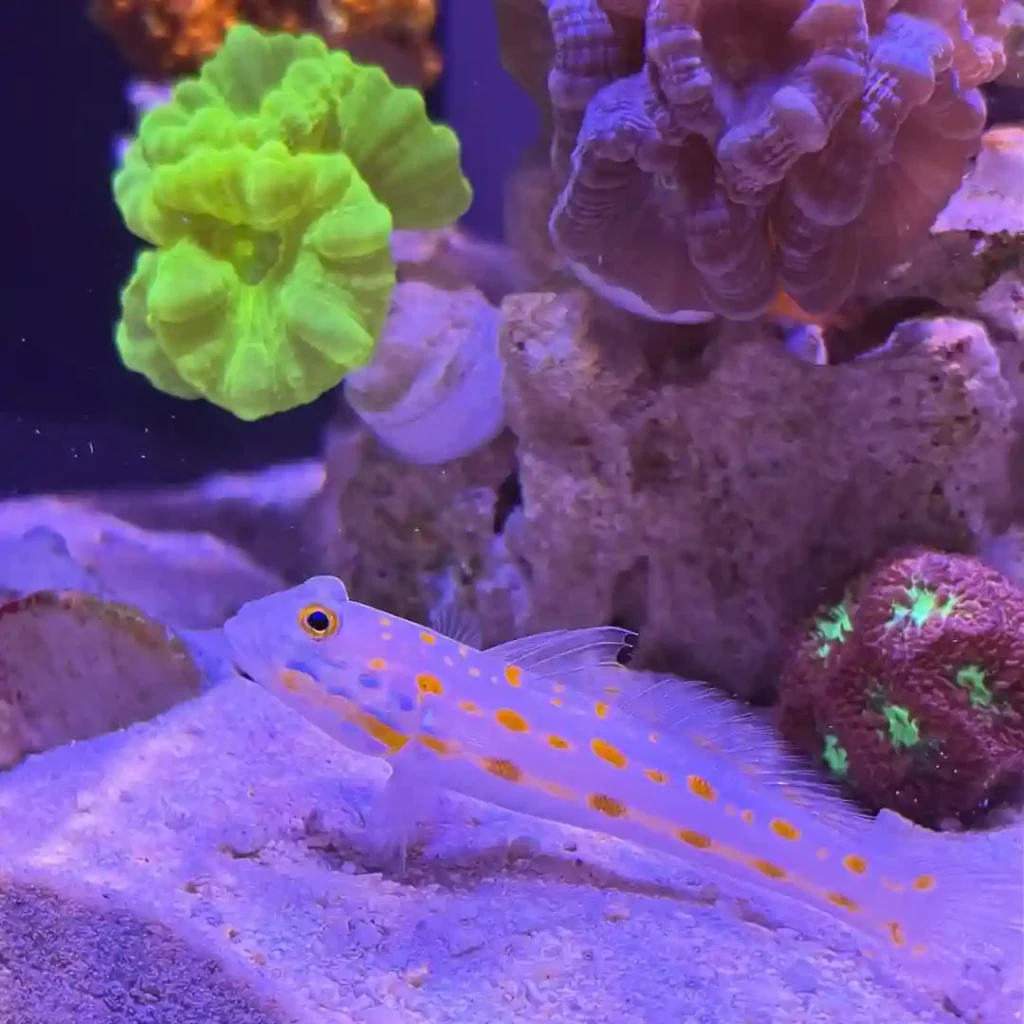
Meet the Diamond Goby
These little guys are native to the Indo-Pacific and hang around sandy areas near coral reefs. They’re easy to spot with their white body covered in shimmering orange spots, a slender shape, and that trademark grin (or at least what looks like one).
Quick Species Facts
- Scientific Name: Valenciennea puellaris
- Common Name: Diamond Watchman Goby, Diamond Sleeper Goby
- Size: 5–6 inches
- Temperament: Peaceful
- Lifespan: Around 5 years
- Diet: Carnivorous (with a twist of scavenger)
These fish are excellent for beginners who want a functional fish — one that helps clean the tank while looking good doing it.
Tank Setup for a Diamond Goby
Let’s get one thing straight — this fish needs sand. Not gravel, not bare-bottom — good, fine sand. That’s their playground, dining area, and bedroom all in one.
Tank Size and Layout
- Minimum tank size: 40 gallons for one goby
- Substrate: Fine sand bed at least 2–3 inches deep
- Decor: Live rock for burrowing stability and perching
- Tank cover: A must (they jump more than you’d expect)
If your sand bed is too coarse, they’ll struggle to sift it through their gills properly. You’ll know it’s too big when your goby gives up digging and just sulks near the corner.
Read also: Royal Gramma 101: Care, Compatibility, Lifespan & More
Water Parameters
| Parameter | Ideal Range |
| Temperature | 72–78°F |
| pH | 8.1–8.4 |
| Salinity | 1.020–1.025 |
| Ammonia/Nitrite | 0 ppm |
| Nitrate | <20 ppm |
Keep your tank stable and well-oxygenated. Diamond Gobies are hardy, but they don’t appreciate dirty water or wild swings in salinity.
Feeding Your Diamond Goby
You might think these fish live off sand alone. Nope. They’re sand sifters, not sand eaters. They sift sand to find tiny organisms—like copepods, worms, and leftover food.
What to Feed
They’ll naturally graze all day, but you should still feed them:
- Frozen mysis shrimp
- Brine shrimp (enriched preferred)
- Finely chopped seafood (shrimp, clam, scallop)
- Sinking pellets or wafers for carnivores
Feed 2–3 times daily in small portions. If you’ve got a newer tank with sterile sand, your goby might not find enough natural snacks — supplement with prepared foods.
Feeding Tips
Drop food near their burrow or use a feeding tube. Otherwise, they’ll spend more time waiting for leftovers than eating. A hungry goby eventually gets thin and weak, so keep an eye out for a shrinking belly.

Tank Mates: Friends and Frenemies
Diamond Gobies are generally peaceful and prefer to mind their own business. They just want to dig, eat, and occasionally stare at you through the glass.
Good Tank Mates
They mix well with:
- Clownfish
- Firefish
- Cardinalfish
- Royal Grammas
- Blennies (non-territorial species)
They also do great in reef tanks — they won’t bother corals intentionally, though they will occasionally redecorate by dropping sand on them.
Fish to Avoid
Avoid pairing with:
- Aggressive wrasses or dottybacks
- Large predatory fish (they’ll see your goby as sushi)
- Other sand-sifting gobies unless you have a huge tank
If you really want a pair, buy them as an established male-female pair. Randomly mixing two often ends in “Who gets the sand bed?” duels.
Behavior & Personality
This is where Diamond Gobies shine (pun intended).
They spend most of their time digging burrows and sifting sand through their mouths, cleaning it as it falls out of their gills. It’s oddly satisfying to watch — like ASMR for aquarists.
They’re also known for being a bit skittish. Loud noises or sudden movements can send them darting straight into their burrow (or out of the tank if you don’t have a lid). But once they settle in, they’ll come out regularly, especially during feeding time.
Fun fact: Some owners swear their goby “smiles” at them when cleaning the sand. I can’t confirm that, but mine definitely looked smug after rearranging all my coral.
Health and Longevity
Diamond Gobies are tough, but a few common issues can pop up.
Common Problems
- Starvation: The #1 cause of death. Make sure they get enough food.
- Stress: Caused by aggressive tank mates or unstable parameters.
- Jumping: Cover your tank — they’ll bolt during stress or at night.
- Gill irritation: If your substrate is too coarse, it can damage their gills over time.
Keep up with regular water changes, feed well, and avoid rough sand — that’s the golden trio for keeping your goby healthy.
Signs of a Happy Goby
- Constantly digging and sifting
- Bright eyes and firm body
- Active during the day
- Building burrows under rocks or coral
If yours hides nonstop or refuses to eat, check your parameters and food variety.
Breeding Diamond Gobies
Breeding these fish in home aquariums is possible, but not easy. They’ll only spawn if perfectly paired and comfortable in their environment.
Here’s what happens:
- The pair builds a burrow together.
- The female lays eggs inside.
- The male guards the nest until hatching (about 3–5 days).
Raising fry is the tricky part they need tiny live food like rotifers, and most don’t survive in typical reef tanks. For hobbyists, it’s more of a fun surprise than a project.
Read also: Fairy Wrasse Care: Feeding, Mates & Reef Guide
Why You’ll Love This Fish
If you like your tank neat and your fish useful, the Diamond Goby is basically your aquatic housekeeper.
They’re perfect for reef setups because they keep the sand bed clean and aerated, which helps prevent algae buildup and detritus pockets.
They’re peaceful, beautiful, and oddly therapeutic to watch. It’s like having a tiny underwater landscaper who never gets tired.
Pro Tips for Keeping Diamond Gobies
Here’s the stuff you only learn from experience (or from someone else’s mistakes — you’re welcome):
- Use a lid. Seriously, they will jump.
- Secure rockwork. They dig under rocks, so unstable décor can collapse.
- Feed consistently. Even with a mature sand bed, supplement their diet.
- Choose fine sand. Sugar-sized aragonite works best.
- Avoid fast or aggressive tank mates. They’ll steal food or spook your goby.
And FYI, if your goby keeps covering corals with sand, try adjusting your flow direction or rearranging rocks. They tend to dig in one “favorite” corner.
Common Mistakes to Avoid
- Skipping the lid. You’ll regret it the first time you hear a thud.
- Not feeding enough. Sand isn’t a food source — it’s just their tool.
- Using coarse substrate. Hurts their gills and stops sifting behavior.
- Adding two males in small tanks. Instant showdown.
- Ignoring your aquascape stability. They’ll dig under everything if they can.
Avoid these, and your Diamond Goby will reward you with years of peaceful, satisfying activity.
Quick Care Summary
| Category | Requirement |
| Tank Size | 40+ gallons |
| Substrate | Fine sand, 2–3 inches deep |
| Temperament | Peaceful |
| Diet | Carnivorous (mysis, brine, chopped seafood) |
| Reef Safe | Yes |
| Lifespan | 5 years |
| Difficulty | Easy to moderate |
| Jump Risk | High – keep covered |
Final Thoughts
The Diamond Goby is one of the most underrated fish in the saltwater hobby. It doesn’t have neon colors or flashy fins, but what it does have is personality, purpose, and a strong work ethic.
If you want a fish that keeps your tank looking fresh while staying peaceful and entertaining, this sand-sifter deserves a spot on your list.
Just give it a good sand bed, stable water, and some quality food — and it’ll repay you by doing half your cleaning for free. Honestly, what more could you ask for? 🙂

